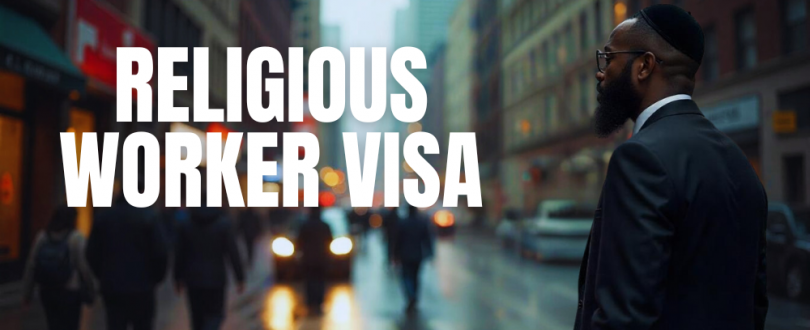
If you’re a religious worker or part of a faith-based organization in the U.S., the immigration landscape in 2025 has brought significant changes that you need to be aware of. From visa backlogs to legislative updates, staying informed is crucial for planning and maintaining your ministry work.
Understanding the Basics: R-1 and EB-4 Visas
Religious workers typically enter the U.S. under two main visa categories:
R-1 Visa: A temporary nonimmigrant visa allowing religious workers to serve in the U.S. for up to five years.
EB-4 Visa: An employment-based immigrant visa providing a pathway to permanent residency (green card) for special immigrants, including religious workers.
Many R-1 visa holders aim to transition to EB-4 status to continue their religious service in the U.S. permanently.

The EB-4 Visa Backlog: A Growing Concern
In 2025, the EB-4 visa category has experienced significant backlogs, particularly affecting non-minister religious workers. This is largely due to a policy change in April 2023, where the Department of State merged the visa queue for religious workers with that of minors from Guatemala, Honduras, and El Salvador. This integration has led to longer wait times and increased competition for the limited number of EB-4 visas available annually.
As of now, the EB-4 category is marked as “unavailable” for the remainder of Fiscal Year 2025, meaning no new visas will be issued until October 1, 2025.
Legislative Efforts: The Religious Workforce Protection Act
In response to the challenges faced by religious workers, Senators Kaine, Collins, and Risch introduced the Religious Workforce Protection Act in March 2025. This proposed legislation aims to address the hardships caused by the EB-4 backlog, ensuring that faith communities across the nation can continue to thrive and serve.
Navigating the R-1 Visa Limitations
The R-1 visa allows religious workers to serve in the U.S. for up to five years. However, with the EB-4 backlog, many R-1 holders are reaching their maximum stay without a clear path to permanent residency. Some organizations have explored transitioning R-1 workers to H-1B visas, which can offer an additional six years of work authorization. This strategy requires the religious organization to qualify as a cap-exempt employer, typically by demonstrating affiliation with a higher education institution.
The Non-Minister Sunset Provision: Temporary Relief
The Non-Minister Sunset Provision, which allows non-minister religious workers to apply for permanent residency, was extended through September 30, 2025. While this extension provides temporary relief, it’s important to note that the EB-4 visa category remains unavailable until the start of Fiscal Year 2026.
Practical Steps for Religious Workers and Organizations
Given the current landscape, here are some actionable steps:
1. Stay Informed: Regularly check the USCIS website and the Visa Bulletin for updates on visa availability and policy changes.
2. Consult Legal Experts: Work with immigration attorneys who specialize in religious worker visas to explore alternative pathways and ensure compliance with all requirements.
3. Plan Ahead: If you’re on an R-1 visa nearing its expiration, begin exploring options early, such as transitioning to an H-1B visa or preparing for a temporary return to your home country if necessary.
4. Advocate: Engage with faith-based coalitions and advocacy groups to support legislative efforts like the Religious Workforce Protection Act.
Conclusion
The immigration landscape for religious workers in the U.S. is undergoing significant changes in 2025. While challenges like visa backlogs and policy shifts present obstacles, staying informed and proactive can help religious workers and organizations navigate this complex environment. By understanding the current issues, exploring alternative visa options, and engaging in advocacy, faith communities can continue their vital work across the nation.

